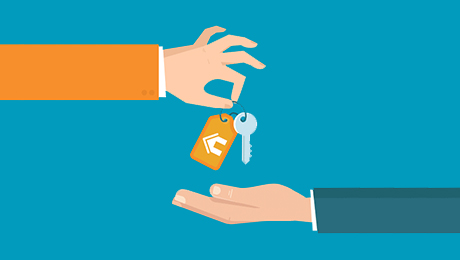Leasing Solar Panels May Drive Home Buyers Away

Perhaps the idea of renting solar panels for the home rather than buying them outright is a new concept for some homeowners. It is a fairly recent trend that began around eight years ago in which solar installation companies allow customers to rent the space on their homes’ rooftops. According to a Bloomberg News story, there was a 38 percent surge in lease agreements for residential solar panels last year.
What seals the deal is something known as a “Power Performance Agreement.” The Environmental Protection Agency (EPA) explains such agreements work like this:
“In exchange, the homeowner gets a reduction (usually 10-20%) of their utility bill. The solar service provider owns, maintains and operates the photovoltaic installation. The homeowner pays nothing up front, so there is no capital cost outlay.”
At first glance, this may seem like a great way to do the right thing environmentally and save on the cost of monthly utilities. And…isn’t there some sort of federal tax credit involved for homeowners investing in these types of upgrades? Well, just hold on…and get the real story:
- The solar leasing firms are actually the ones who stand to receive the 30 percent tax credit, not the homeowner.
- Should a homeowner want to sell the property, most of the Power Performance Agreements require the new owner to assume the responsibility and terms of the lease. This aspect can easily turn away scores of buyers who have no interest in signing up for a solar contract.
- Because the solar rental firms are the true owners, they also own the power the panels generate. Although they do save a little money, homeowners must still pay 80 to 90 percent of the utility costs. Instead of paying the power company, they pay the solar rental company.
- Because panels often do not provide enough power to support a household 24/7, homeowners usually have to buy additional power from their local utility company.
- Even though kilowatts have a fixed price, it is an accepted practice that solar service firms have a built-in annual price increase of 1 to 5 percent.
- If a homeowner wants to sell the property and is unable to persuade the new owner to assume the solar panel contract, he or she will be responsible for the costs remaining and or the expenses involved in removing the panels.
- Rented solar panels on a home will not be included in the appraisal figure.
So, considering the drawbacks, why have solar rentals become so popular? Enthusiastic homeowners are often anxious to give solar power a try. Rather than going it alone, they may feel more comfortable doing so in conjunction with a business that specializes in solar power generation. A home appraiser from Punta Gorda, FL, Sandy Adomatis, sums it up with this observation, “Homeowners don’t understand what they’re signing when they get into this. You’ve got another layer to add on top of finding a buyer for the house. It’s not a plus.”
The Bloomberg News article cited several stories from homeowners who had difficulty selling their homes because of leased solar panel contracts that needed to be part of the deal. One problem was that in spite of the evidence that solar power is in fact a money saver when it comes to the price of utilities, many prospective buyers were simply not interested. Sellers who were able to convince buyers to assume the leases, usually were forced to reduce the price of the property by several thousand dollars.
In direct contrast, those who purchase rooftop solar panels increase the value of their homes. The website, Financial Web speculates that solar panels will generally pay for themselves within three years or less. The site estimates, “A typical rooftop solar unit could range from $10,000 to $35,000.” This includes the price of installation. Please note that home size and rooftop space also determine the cost.
Another huge benefit that comes along with buying a residential solar power unit are the tax credits. There are currently substantial tax perks at the federal and state level. According to the article on Financial Web, although it varies across the states, “tax incentives generally cover between 40 to 90 percent of the cost of the solar panels.” The combination of funds recouped through tax credits, money saved on utility bills, value added, plus reducing one’s carbon footprint, certainly spell a strong case for investing in a home solar power system. Another seldom-discussed benefit is the wear and tear that solar panels can save a roof!
Subscribe To Our Newsletter
Sign up with your email address to receive news and updates.